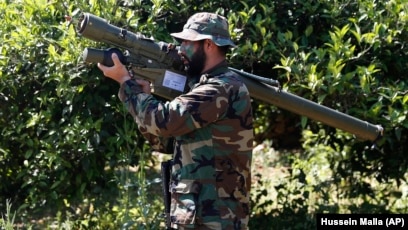Hezbollah’s Alleged Cease-fire Violations: Israeli Defense Forces Take Action
On Saturday, the Israeli Defense Forces (IDF) reported that Hezbollah fighters are allegedly smuggling weapons into Lebanon, despite an ongoing cease-fire agreement with Israel. This unsettling development comes as tensions linger in the region, raising concerns about the stability of the fragile truce that has been in place for several days.
Israeli Air Force Strikes Target Hezbollah Operations
In a statement released on X, IDF Arabic Spokesperson Avichay Adraee revealed that Israeli Air Force jets, operating under the guidance of Military Intelligence, conducted targeted strikes against military infrastructure situated near the border crossings between Syria and Lebanon. These sites, according to Adraee, were being utilized by Hezbollah to transport weaponry from Syria into Lebanon.
“This operation followed the detection of Hezbollah combat equipment being transferred from Syria to Lebanon, even after the cease-fire agreement,” Adraee stated. “This activity poses a threat to the State of Israel and violates the cease-fire understandings.”
The Cease-fire: A Fragile Agreement
The cease-fire, which entered its fourth day on Saturday, was established in the aftermath of recent hostilities between Israel and Hezbollah. This truce was ostensibly aimed at de-escalating heightened tensions following a series of exchanges of fire. Nevertheless, Israeli troops continue to maintain their presence in southern Lebanon, having initiated a ground operation there in October.
According to the terms outlined in the cease-fire agreement, Israeli forces are expected to withdraw from the region within the next 60 days. However, the ongoing activity of Hezbollah militants raises questions about the sustainability of this accord and the potential for further conflict.
Hezbollah’s Continued Activities in Southern Lebanon
Despite the fragile truce, reports suggest that Hezbollah militants remain actively engaged in military operations within Lebanon. Avichay Adraee noted that Israeli forces had observed armed personnel in southern Lebanon loading various military supplies, including RPGs and ammunition, into a vehicle. Shortly after this observation, Israeli Air Force aircraft targeted the moving vehicle, underscoring the IDF’s commitment to countering perceived threats.
Targeting Missile Production Infrastructure
In a further escalation of military actions, another Israeli Air Force strike targeted a vehicle linked to Hezbollah’s missile production capabilities deep within Lebanon. These operations appear to be part of a broader strategy to disrupt Hezbollah’s military infrastructure and to send a clear message regarding Israel’s zero-tolerance policy for violations of the cease-fire.
Confiscation of Weapons and Equipment
Israeli troops engaged in operations in southern Lebanon also reported the discovery of combat equipment concealed within a mosque frequenting Hezbollah members. The seized items reportedly included rifles and grenades. Adraee shared images depicting the confiscated weapons, illustrating the ongoing concerns regarding Hezbollah’s military capabilities and their apparent disregard for the terms of the cease-fire.
IDF’s Commitment to the Cease-fire
Despite the ongoing violations, Avichay Adraee emphasized the IDF’s commitment to enforcing the cease-fire. “The IDF is deployed in the southern Lebanon area and will enforce any violation of the cease-fire agreement,” he stated, indicating that the military will continue to monitor and respond to Hezbollah’s activities.
The Regional Implications
The ramifications of these developments extend beyond the immediate conflict zone. The continuing hostilities threaten to destabilize an already volatile region, drawing in international actors and potentially complicating diplomatic efforts aimed at securing a lasting peace. As tensions simmer, the eyes of the international community remain fixed on the Israel-Hezbollah conflict, assessing the potential for renewed clashes.
Conclusion
The situation in Lebanon continues to be precarious, with Hezbollah’s alleged violations of the cease-fire posing significant concerns for the Israeli government and its armed forces. As both sides remain on high alert, the potential for a resurgence of violence looms large, necessitating vigilant monitoring by regional and global stakeholders.
As the cease-fire attempts to hold, the actions taken by the IDF reflect a broader strategy of deterrence and defense in the face of emerging threats. The coming days will be critical in determining not only the fate of the cease-fire but the future of Israel-Hezbollah relations in an already challenging geopolitical landscape.
